The ability to catch your balance is a superpower we often take for granted, until a sudden stumble reminds us how precious and fragile our independence can be. For seniors, a fall is more than just a scare; it’s the leading cause of injury that can dramatically alter daily life.
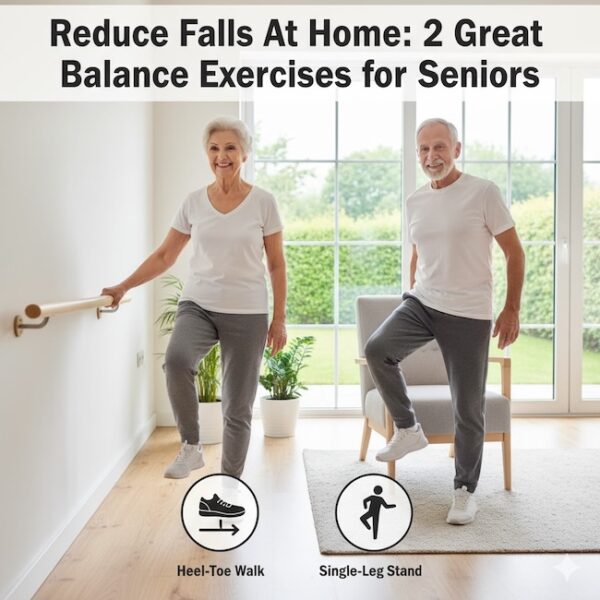
But what if you could actively build a stronger, more stable foundation from the ground up? The good news is you can, and it doesn’t require a gym membership or fancy equipment. By practicing two simple, doctor-approved balance exercises at home, you can significantly reduce your risk of falls and reclaim the confidence to move freely through your day.
Balance Exercises for Seniors Can Preserve Independence
Balance training is essential for helping older adults reduce their fall risk.
This is important because falls are a leading cause of loss of independence or the need to move to assisted living.
We found a free 12 minute video that helps seniors improve their balance with two functional balance exercises for seniors to do at home.
In the video, physical therapists Bob and Brad clearly demonstrate how to perform these exercises and explain how to make them more or less challenging as needed to suit your older adult’s abilities.
With regular practice, these simple exercises increase balance and reduce fall risk – keeping your older adult as independent as possible.
When Exercising – Use Caution
The last thing anyone wants is to get injured while exercising.
That’s why it’s best to take it slow, especially at first, until your older adult gets used to the movements and is steady on their feet.
Hear Bob and Brad talk about safety at 3 minutes 33 seconds in the video.
If your older adult’s balance isn’t strong, make sure that someone is with them when they do these balance exercises.
Many people could benefit from the safety and support a gait belt provides. And if they usually use a cane, they should use it for these exercises.
Even if they start with poor balance and need a lot of assistance, encourage your older adult to keep doing the exercises safely with someone at their side.
With practice, they’ll gain balance and strength and will need less and less help.
VIDEO: How to Improve Balance in the Elderly
2 Useful Balance Exercises for Seniors In the Home
Exercise 1: Touch the Dots
(3 minutes 5 seconds in video)
Lay out the pattern of “dots” on the floor using a non-slip surface, such as non-adhesive shelf liner.
Even something as simple as pieces of colored paper taped to the floor would work. Choose a color that contrasts with the floor so the dots are easy to see.
To do the basic exercise, start by standing on the middle dot. Keep the left foot on the ground and lift the right foot to touch the dot in the front. Then, use the right foot and touch the dot on the right side. Then use the right foot to cross over in front and touch the dot on the left side (this is tough!). Finally, use the right foot to touch the dot behind.
Repeat on the other side, keeping the right foot on the ground and using the left to touch all the dots.
To adapt for people who are working on their mobility:
- Use a cane
- Get help with balance as needed (for example, using a gait belt)
- Place the pads closer together
This is a challenging exercise, so most older adults won’t need to make it more difficult.
In case someone progresses beyond the basic exercise, here are some ways to make it more challenging. Remember to increase the difficulty slowly!
- Place the pads farther apart.
- Replace the center standing dot with a foam exercise balance pad or flat cushion.
- Reduce vision with DIY “extra dark” sunglasses – see it at 6 minutes in the video (for safety, another person must be present when vision is impaired).
- Combine all of the above to make it super challenging.
Exercise 2: Walking with Cones
(7 minutes 55 seconds in video)
Lay out “cones” in a T-shaped pattern.
You don’t have to buy the cones shown in the video; anything that’s pretty tall and slim, easy to see, and won’t fall over will work – maybe something like tall plastic bottles of juice.
To do the basic exercise, start at the base of the T. Walk forward, just past the cone in front of you. Sidestep to the left-most cone. Sidestep all the way to the right-most cone. Sidestep back to the center cone. Walk backwards to the starting point.
To adapt for people who are working on their mobility:
- Use a cane
- Get help with balance or walking as needed (for example, using a gait belt)
- Place the cones closer together to make the “T” smaller
This is a challenging exercise, so most older adults won’t need to make it more difficult.
In case someone progresses beyond the basic exercise, here are some ways to make it more challenging. Remember to increase the difficulty slowly!
- Change up the footwear – shoes vs anti-slip grip socks
- Wear the DIY “extra dark” sunglasses to reduce vision (for safety, another person must be present when vision is impaired)
- Place the cones farther apart to make the “T” larger
- Walk a little faster
- Bend down and touch each cone
Add a “distraction”:
Many falls occur when someone is distracted and momentarily not fully concentrating on walking. To improve balance in these situations, do the same T exercise while looking in different directions. (See 10 minutes 39 seconds in the video)
Final Thoughts
Committing to these two simple exercises is more than just a daily routine; it’s a powerful investment in your independence and well-being. Consistency is your greatest ally; even a few minutes each day can forge a path to stronger legs, sharper stability, and the priceless confidence that comes with knowing you’re on solid ground.
You have the power to safeguard your health and maintain your active lifestyle proactively. So, steady yourself by a chair, take a deep breath, and begin. Every rep is a step toward a future filled with sure-footed strength and freedom.
Next Steps: See a clear demonstration of 2 useful balance exercises for seniors to do at home from 2 physical therapists (12 minutes)
Recommended for you:
- 3 Easy Tai Chi Videos for Seniors Prevent Falls, Improve Balance and Strength
- Chair Yoga for Seniors: Reduce Pain and Improve Health
- 12 Easy and Gentle Seated Stretching Exercises for Seniors in 4 Minutes
This article contains affiliate links. We never link to products or services for the sole purpose of making a commission. For more information, see How We Make Money.
About the Author

Connie is the founder of DailyCaring.com and was a hands-on caregiver for her grandmother for 20 years. (Grandma made it to 101 years old!) She knows how challenging, overwhelming, and all-consuming caring for an older adult can be. She also understands the importance of support, especially in the form of practical solutions, valuable resources, and self-care tips.
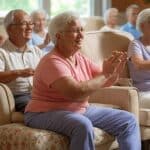









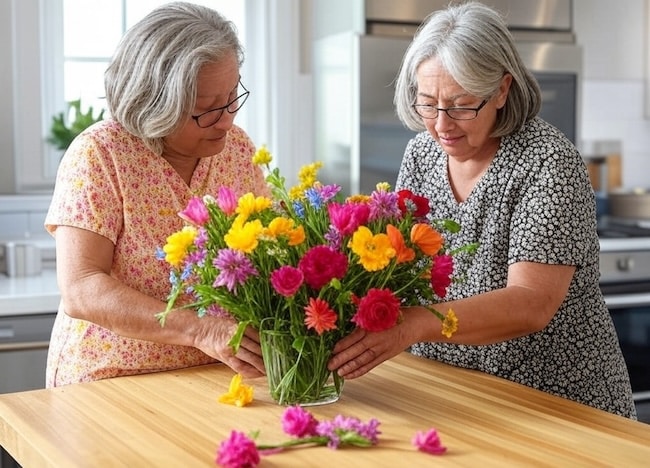
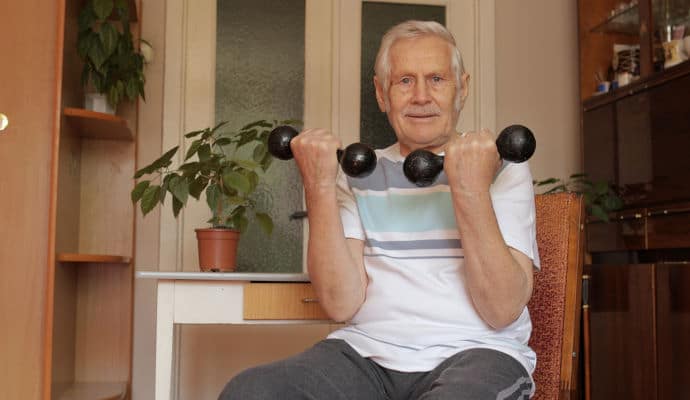
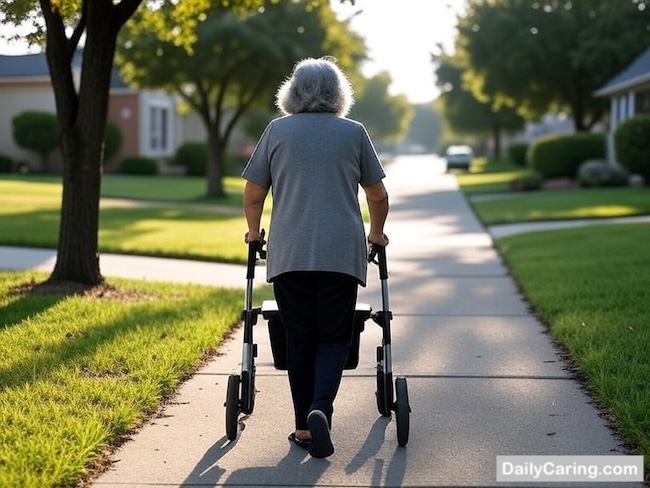
Those exercises are very important for the elderly, prolonged sitting can cause poor Blood Circulation , Sores, & Cramp. Even a little exercise is great for Mental wellbeing. Of course People can do those exercises in groups so a fun element can be established. Well done Daily Caring.
So glad you found this helpful!